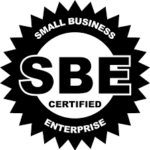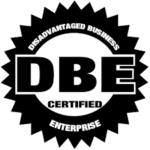
We’ve explored how cities kill their own growth through Strategic Destruction—the systematic dismantling of what made them great. We’ve examined how those same cities can resurrect themselves by reversing the very moves that destroyed them. But there’s a third dimension to this framework that hits closer to home: the strategic destruction that must happen within us before we can build anything truly transformative. Read these 10 points to understand how to grapple with the dismantling of your personal life that’s necessary for your clients and customers to receive the best from your business and for your to completely fulfil your purpose.
Part 1: The Demolition You Didn’t Order
Nobody talks about the prerequisite for breakthrough: breakdown.
We celebrate the launch. We applaud the pivot. We study the success story. But we skip over the part where everything you thought you knew about yourself gets demolished—by choice or by force.
Here’s what they don’t tell you in business school: Sometimes your life has to fall apart before your business can rise. Not because you’re weak. Not because you failed. But because comfortable stability is the enemy of authentic innovation.
I’m not talking about manufactured drama or self-sabotage. I’m talking about necessary destruction —the strategic dismantling of what no longer serves so something real can emerge.
I had to grapple with the dark side of my Enneagram Type 2 personality, known nobly as The Giver. I learned early on through trauma that I could not be loved solely for who I am. I gave love in order to receive love because I didn’t feel worthy of being loved without earning it. So, in a very innocent way, I learned to give of myself to be worthy of the love of others, which ultimately made me a people-pleaser.
Q1: How could I run a business as a people-pleaser?
Part 2: When Comfortable Becomes Toxic
Three years ago, I had what most would call a successful life. Big 4 consulting. Six-figure salary. 30-year marriage. Suburban house. The whole package.
I was also dying inside.
Not dramatically. Quietly. The slow suffocation that comes from building a life that looks right from the outside but feels hollow from within. I had optimized for safety, not authenticity. For approval, not alignment.
The problem with comfortable is that it’s seductive. It whispers: “Why risk what’s working?” But working and thriving are not the same thing. And sometimes what’s “working” is actually the very thing that’s killing your potential.
Comfortable had become my prison. I just didn’t know it yet.
What was comfortable was comfortable for everyone else except me. I didn’t love myself enough to care for myself. This wouldn’t mean abandoning my responsibilities to those who depended on me but it also didn’t mean abandoning myself in the interest of everyone else’s happiness.
Q2: How could I lead others if I hadn’t learned how to lead myself?
Part 3: God’s Demolition Crew
Life has its own strategic planning department. And when you’re too comfortable to make necessary changes, it makes them for you.
First came the spine surgery. Months of recovery. Forced stillness. Time to think—really think— about what I was building versus what I actually wanted.
Then came the separation. The end of a 30-year marriage. The unraveling of an identity I’d worn for decades. Wife, father, corporate executive—suddenly I was none of those things in the way I’d always been.
Finally, the professional leap. Leaving the safety of Big 4 consulting to start Saulsberry Group.
Trading the golden handcuffs for complete uncertainty.
Each event felt catastrophic in the moment. Each one was actually liberation.
I found myself supporting agendas and values that were not my core values. Whether it was where I worked, worshiped, or lived my life had become misaligned. This demolition was needed and necessary.
Q3: How could I lead a strategic transformation business without myself having gone thought this process personally?
Part 4: The Strategic Framework for Personal Destruction
Here’s what I learned: There’s a difference between destructive destruction and necessary destruction.
Destructive destruction is chaos without purpose. It tears down without building. It’s the midlife crisis stereotype—the sports car, the affair, the dramatic exit that leaves wreckage everywhere.
Necessary destruction is strategic. It’s surgical. It dismantles what’s not working to make space for what could work. It’s painful, but it’s purposeful.
The framework looks like this:
Diagnose What’s Actually Broken
Not what looks broken to others, but what feels broken to you. The gap between who you are and who you’re pretending to be. The distance between your values and your daily actions.
Identify the Load-Bearing Walls
Some things in your life are structural—they can’t be removed without everything collapsing.
Others just look important but are actually holding you back. Know the difference.
Execute Controlled Demolition
Don’t blow everything up at once. Strategic destruction is methodical. One wall at a time. With intention, not impulse.
Build on the Foundation That Remains
What survives the demolition is what’s actually strong. Your values. Your skills. Your vision. Your people. Build from there.
Q4: How will knowing the difference between destructive destruction vs necessary destruction help my company and clients with their own strategic transformations?
Part 5: Why Broken Founders Build Better
There’s something powerful about starting a business after you’ve been broken. You’ve already survived your worst-case scenario. You know what matters and what doesn’t. You’re not building from fear—you’re building from clarity.
When I started Saulsberry Group, I wasn’t trying to prove anything to anyone. I wasn’t chasing external validation or trying to maintain an image. I was building something real because I finally knew who I really was.
The divorce taught me about authentic communication.
The health scare taught me about priorities.
The career leap taught me about courage.
Each “failure” became a competitive advantage. Each breakdown became a breakthrough in disguise.
Q5: How has this personal transformation emptied me of frivolous things that would have made me a less impactful leader?
Part 6: The Comfortable Lie We Tell Ourselves
Most people resist necessary destruction because they believe the comfortable lie: that stability equals success.
But here’s the truth: Stability is often stagnation in disguise.
The marriage that’s “fine” but not fulfilling.
The job that pays well but drains your soul.
The life that looks good on paper but feels empty in reality.
We cling to these things because changing them feels risky. But not changing them is the bigger risk. Because while you’re protecting what you have, you’re killing what you could become.
Q6: How could I advise my clients to make bold, risky, strategic transformations in their business if I couldn’t empathize with what they were feeling?
Part 7: Signs Your Life Needs Strategic Demolition
How do you know when it’s time for necessary destruction? Look for these signals:
- You’re optimizing for other people’s approval instead of your own fulfillment
- Your daily actions don’t align with your stated values
- You feel successful but not satisfied
- You’re managing your life instead of living it
- You’ve stopped growing because you’re too busy maintaining
If any of these resonate, you might be due for some strategic demolition. Remember, this doesn’t mean that you “blow up your life.” What you are doing is allowing what’s deep within you work itself into how you live your life.
Q7: How could I lead anyone, including myself, living with such duplicity?
Part 8: The Phoenix Isn’t a Metaphor—It’s a Method
Rising from ashes isn’t mystical. It’s methodical.
First, you have to be willing to burn. Not everything—just what’s not working. The outdated beliefs. The limiting relationships. The safe choices that are actually dangerous because they’re keeping you small.
Then, you have to be patient with the rebuild. Phoenix construction takes time. You’re not just putting the pieces back together—you’re building something entirely new.
Finally, you have to trust the process. Necessary destruction feels destructive while it’s happening. It only looks strategic in the rearview mirror.
Q8: How can you use this opportunity to fully reshape your life to make yourself better as a person and leader?
Part 9: What I Built from the Wreckage
One year after the demolition, here’s what rose from the ashes:
- A consulting firm that’s an extension of my authentic self, not a performance
- Work that energizes instead of drains
- Relationships built on truth, not convenience
- A life that feels aligned, not optimized
- The freedom to be completely honest about the journey
The breakdown wasn’t the end of my story. It was the beginning of the real one.
Q9: How can you not anticipate the joy that comes from living an authentic life?
Part 10: Your Necessary Destruction Awaits
Maybe you’re reading this from your own comfortable prison. Maybe you’re sensing that something needs to change but you’re afraid of what that change might cost.
Here’s what I want you to know: The cost of staying the same is higher than the cost of necessary destruction.
Yes, it’s scary to dismantle what you’ve built. But it’s scarier to spend your life building something that isn’t actually yours.
The question isn’t whether you need some necessary destruction in your life. The question is whether you’ll choose it or wait for life to choose it for you.
Either way, it’s coming.
The only choice you have is whether you’ll be strategic about it or let it be destructive.
Q10: How are you strategically going about the business of necessary destruction in your life and business?
Ready to explore what necessary destruction might look like in your life or business?
Take our Transformation Readiness Assessment – Sometimes the best way forward is to honestly assess what needs to be left behind.
Book a Discovery Call – If you’re sensing it’s time for strategic demolition, let’s talk about how to make it necessary instead of just destructive.
Because the most powerful businesses aren’t built from success.
They’re built from the courage to let what’s not working fall apart.




